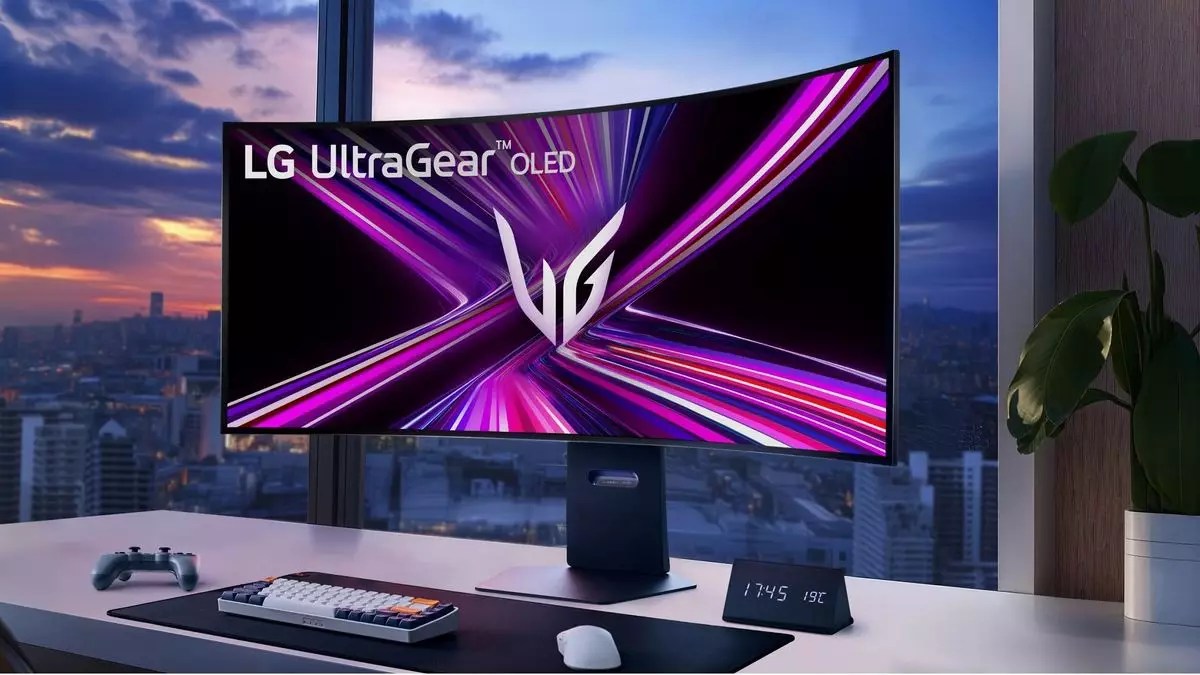The world of PC gaming is constantly evolving, and a recent surge in the popularity of OLED monitors has caught the attention of industry experts and gamers alike. According to LG, a prominent player in display technology, a staggering 22% of the PC gaming monitor market is now composed of OLED panels. This statistic is particularly noteworthy given that OLED technology has only been available in the PC gaming space for about two years. When compared to TV technology, which has seen OLED only claim an 18% market share despite being available since 2013, it’s evident that gamers are embracing this cutting-edge technology with remarkable enthusiasm.
The first gaming monitor to utilize OLED technology was the Alienware 34 AW3423DW, introduced nearly three years ago and based on Samsung’s QD-OLED technology. Following closely was LG’s entry into the market, marking the beginning of a new era for gaming displays. The rapid adoption of OLED monitors can be seen as a response to the increasingly sophisticated requirements of gamers seeking higher fidelity in their gaming experience. The sharp contrast, vivid colors, and fast response times that OLED panels provide undoubtedly enhance gameplay, differentiating them from traditional LCD monitors.
Despite the benefits that OLED monitors promise, they come at a steep price. The initial pricing for entry-level OLEDs begins around $600, while higher-end models can cost upwards of $1,000. In contrast, it’s possible to find LCD monitors at a fraction of that cost, which may cause potential buyers to think twice before investing in an OLED display. What could drive this trend further, however, is the dynamic nature of the gaming industry and the continual push for better graphics and performance—factors that may gradually encourage the transition from LCD to OLED.
The price of OLED gaming monitors is perhaps the most critical barrier to widespread adoption. While OLED technology is lauded for its superior visual performance, the cost deems it niche, particularly when most LCD counterparts are significantly cheaper. This price discrepancy is particularly highlighted when comparing models of similar specifications; a 27-inch 1440p OLED monitor priced at $600 can be juxtaposed against an LCD model of the same size that retails for approximately $200.
As OLED technology continues to develop, we may soon see a shift in pricing structures. If the average price range can fall to about $500 for a 32-inch 4K model and slightly less for smaller configurations, then more gamers might feel inclined to make the switch. For many consumers, the current price point comes with a psychological barrier where the perceived value does not align with the financial commitment required.
A notable advancement in OLED technology came during CES when both Samsung and LG unveiled new panel technologies that promise to significantly improve full-screen brightness—a longstanding drawback of OLED screens. With claims of achieving full-screen brightness levels upwards of 400 nits, this breakthrough could redefine the limitations previously associated with OLED panels. Such an increase in brightness would make OLED monitors even more appealing for gaming, especially in well-lit environments.
Looking ahead, it’s not unreasonable to predict that within a couple of years, we may witness the emergence of sub-$500 OLED monitors boasting these innovative enhancements. Prices may start to come down steadily due to competition, innovation, and increased consumer demand.
The current momentum behind the adoption of OLED gaming monitors underscores an exciting transition within the PC gaming landscape. The notable increase in market share, coupled with advancing technologies and potential future price reductions, positions OLED as a compelling choice for gamers. While price remains a significant hurdle, the prospect of improved performance and accessibility can motivate consumers to embrace this transformative technology.
For those considering an upgrade, the growing availability and variety of OLED monitors means options are becoming more enticing. While it may take time for OLED to fully replace LCD in the PC gaming sphere due to affordability and brand loyalty, the direction we’re headed indicates a bright future for this revolutionary display technology. Keep an eye out for developments that could not only reshape your gaming experience but also the market dynamics in the near future.


Leave a Reply